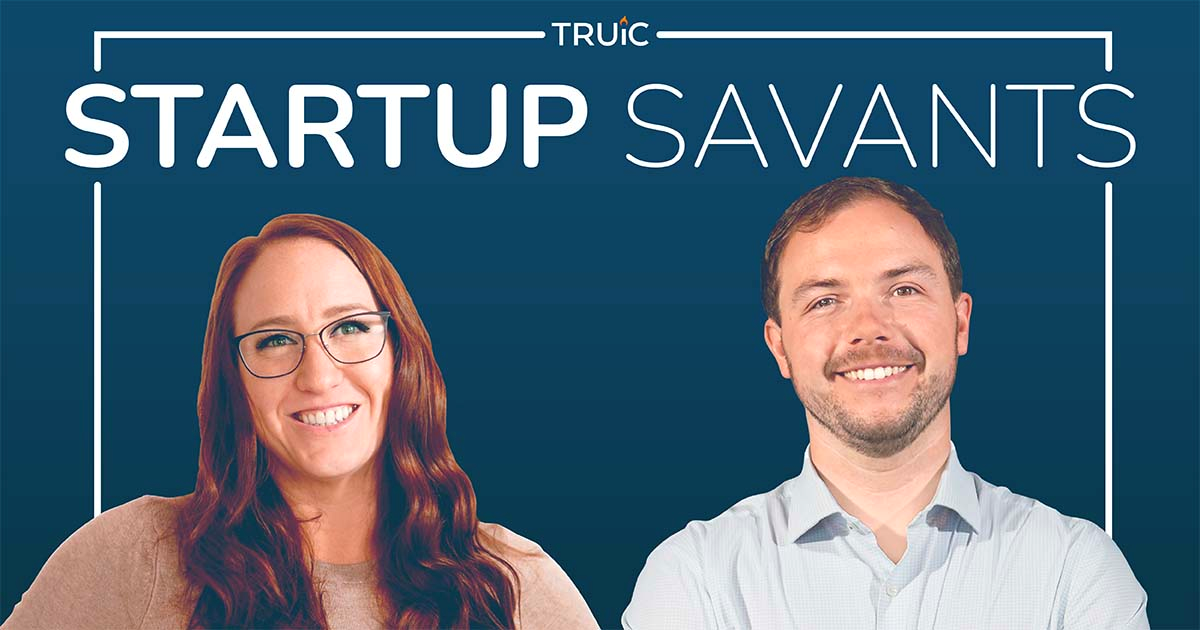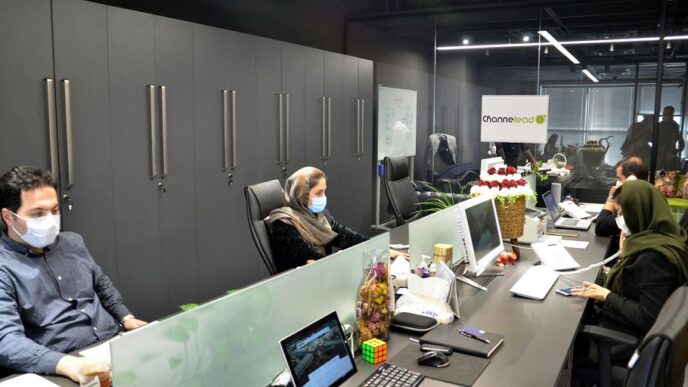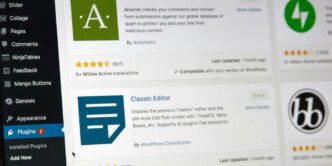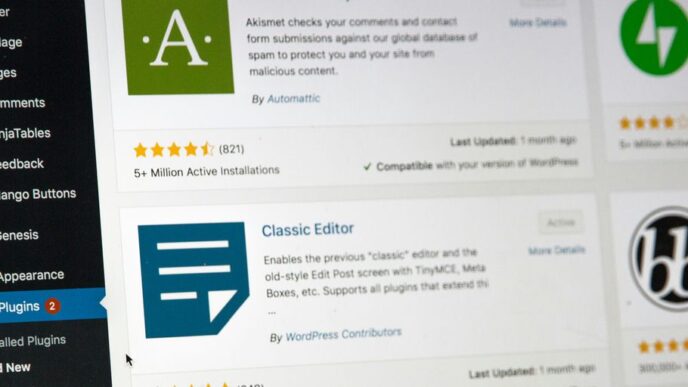This episode of Startups Savants features Joshua Sear, who is founder and CEO of Empower. Joshua comes to the startup world from a nonpareil legal background, having worked in the White House and for the Senate Judiciary Committee. Joshua shares his experiences in taking on ridesharing giants Uber and Lyft.
Joshua’s company, Empower, aims to disrupt the mobility-as-a-service industry by changing the way drivers get paid. The Startups Savants business podcasts cast a spotlight on young entrepreneurs and their ventures. The series is indispensable for anyone who is contemplating transforming their business vision into reality.
Empower was founded to offer independent taxi drivers a better deal. How did the company get started?
“Sure. In speaking with a lot of drivers, when I was using Uber and Lyft, I realized that they were getting absolutely hammered financially, particularly those that were trying to do it for a living, they couldn’t. They also felt completely voiceless. And that’s a terrible feeling. And I don’t think that’s what Uber and Lyft intended when they went out to disrupt the taxi industry, but in their race to grow as quickly as possible, they ended up creating, they and Lyft, created a duopoly that really controls transportation as much, if not more than the taxi industry that they were setting out to disrupt. And the business model itself just doesn’t work for drivers. It’s unsustainable, drivers have known that for a long time and riders are also now realizing it. And in speaking with drivers, I had this aha moment and realized they’re not the customer and I asked, well, what would it be like if they were the customer? What would it look like if we flipped Uber and Lyft’s business model on its head, made the driver our customer, had the rider be the driver’s customer?
What are the advantages of the Empower approach to business?
“In thinking about it, it just looked like that would be a better solution for everyone and that’s what we’ve done. And the way we’ve done that is we’ve enabled drivers to set their own rates, they get a hundred percent of the fare and they can therefore compete with Uber and Lyft. And in doing so, they’re making more money, they’re treated like the valued customers that they are. And at the same time, riders are able to save more. They feel better knowing that drivers are getting a hundred percent of the fare.”
So that’s one way you add value for drivers. What plans do you have to enhance that offering?
“At the end of the day, I think the larger vision also is just enabling drivers and gig workers generally to have the software and support services that they need to build, and run, and grow their own businesses and pursue the American dream just like anybody else. They’re not allowed right now in a lot of places or they’re not able really to run and build their own businesses. They don’t set their own rates, they don’t choose what rides they’re going to accept, really. And we wanted to build a platform that put the choice back in their hands, and they’ve demonstrated that they’re more than capable of doing that when given the support and services that they need.”
You seemed to have had a penchant for business, even while working as a lawyer, right?
“I went to law school in DC and I was interested in politics … I ultimately ended up … for five years at [a] mid-size managed network services and cybersecurity services company as in-house counsel. And I got to work with all the different departments, which was great. I got to see how a business was run. I’ve always been a business-minded attorney … I worked a ton with sales folks, and they’re always bringing contracts, and they’re used to a lot of attorneys telling them why they can’t do stuff. And I was always trying to figure out ways, while mitigating risks, to make sure that we could move forward with the business.
I got to work with the solutions architects, the engineers, with the finance team, tax, and all the senior executives on a regular basis. And I got to a point where I had outgrown the role that I was in. And I was looking for other in-house counsel roles at other companies. And at the same time I was open to doing something totally different. And I came up with this idea.”
You conducted some basic market research by talking to Uber and Lyft drivers. How did that come about?
“So of course, the first thing we did is we requested an Uber, and we started trying to pitch the driver about this idea. And we realized that was a little difficult because you’re talking to the back of somebody’s head, they’re driving … So we realized that wasn’t necessarily the best thing, but we asked him, ‘Well, where are a lot of drivers hanging out?’ And he goes, ‘Well, they’re at the airport.’”
So, there’s a specific parking lot for Uber and Lyft drivers at the Piedmont Triad International Airport. We went over there, and we started talking to drivers, just going up to their windows. And they were super friendly. They really welcomed an alternative, we thought they might, and signed up. We didn’t have an app, we didn’t have anything. This was really just exploratory. Are there drivers that are interested in this? And we started taking their name, phone number, email, and let them know about what we were building and finding out is this something they’d be interested in and almost everyone was excited about it and saying, ‘well, how quickly can you get here?’”
What’s the basic difference between how Uber, Lyft and Empower run their businesses?
“With Empower the driver is our customer. With Uber, the rider is the customer … We don’t have that perspective. Our revenue comes from drivers. And I think one of the things in talking to drivers that we still say is we think it’s super important to treat drivers with respect and to empower them, and just to treat people well generally. But you don’t have to trust us on that. We don’t make a penny off of riders, we get zero from riders. We get all of our revenue from a subscription that drivers pay us. And so if we’re not providing drivers with a level of service that they’re willing to pay for, they’re not going to continue to be our customers.”
Since drivers are simply an intermediary wouldn’t the focus on them impair the service to riders, the ultimate users?
“So there are features within the app that I think ultimately incentivize drivers to provide the highest level of service possible to riders, to their customers. Obviously riders can tip, but also riders at the end of a ride can rate a driver, thumbs up, thumbs down. If they give a thumbs up, they have the ability to favor the driver. And in the rider app, you can turn on a filter that says ‘I only want rides from my favorite drivers.’ And ultimately as we get more and more data and grow, the drivers who have more riders who favor them or have higher ratings will likely be able to set their rates a bit higher and still get just as many rides, assuming people are willing to pay a little bit more for their favorite drivers or for higher-rated drivers.
And we think that people are willing to do that. And we think there’s a lot of money that’s being left on the sidelines that’s not going into the pockets of drivers or the companies that are building platforms that drivers may be using. And that riders are willing and want certain better levels of service and are willing to pay for that. And that’s not being captured right now. And so everybody’s worse off, and everyone’s better off when that does happen.”
Uber and Lyft are household names. What gave you the confidence to compete with them?
“A great question. I think that back when I came up with this idea, at the end of 2018, early 2019, everyone assumed that Uber was the next Amazon. That they could push a button and they were going to be profitable. That they were choosing growth over profitability. I didn’t believe that. I didn’t think that Uber and Lyft, which were fully scaled and owned virtually a hundred percent of the market and were, in the case of Uber, all over the world, that they weren’t big enough. That that was the problem as to why they weren’t making money. I didn’t think that they were spending 10 years and they had a secret plan to make money that they weren’t telling anybody about. And so I viewed then that their business model was broken, and I think it’s still broken. And they haven’t disproved that yet.
In fact, I think there are a lot more people now that think it’s broken. And so, that was one big piece of it. The other thing was their principal thing that they built in many ways was building this big group of drivers, but they did nothing to protect it whatsoever, or foster, or encourage loyalty amongst those drivers. In fact, because of certain issues with labor laws, they were really concerned about making sure that the drivers weren’t actually too loyal. And so there was no switching cost whatsoever. They don’t care whether or not they get their next ride from Uber or from Lyft. And there’s nothing preventing those drivers from using a different platform. And so it’s rare where you have a business that’s grown to the size of Uber or Lyft that really has absolutely no moat. Nothing protecting what it’s built other than the fact that they raised a ton of money. And ultimately that’s not sustainable. And that’s the view that I’ve had then and still have now.”
Speaking of growth, how fast is Empower growing?
“Pretty fast. We launched in DC, which is our principal market, in October of 2020, and now drivers last month earned nearly $2.5 million in gross bookings. Provided 140,000 rides in the DC Metro area in the month of May to over 25,000 riders. And we recently went live in New York City as well. We have a market down in Winston-Salem, that was where we launched. We actually ended up launching a week before the pandemic hit. So, we ended up halting our growth down there, not really trying to push that market, and pivoted to launching in DC. But that market we kept open, and we are actually now starting to do more down there and trying to grow that market as well.”
You’re an attorney, not an engineer. How were you able to develop such a complex app?
“I was fortunate we were able to get some engineers who were involved in building Lyft’s initial iPhone app from scratch. Also had an engineer who built Uber’s initial Android driver app from scratch and managed that team. I got fortunate that a high school classmate of my wife’s was a super smart engineer and he joined the team. And so in the beginning, I made sure that we had some really senior and smart [people] experienced with industry knowledge join the team to help build the initial version of the product.
What aspects of your product increase network effects?
“Sure. So first of all, the product itself is just better than the alternative and the incumbents, so that helps. On the rider’s side, rides are on average about 20% less expensive. And on the driver’s side, the drivers are making on average about 20% more… And… the number two reason why riders are using the platform is because they like that drivers get a hundred percent of the fare … But then beyond that … we incentivize drivers to refer both riders and other drivers. We incentivize riders to refer their friends and also to refer drivers. And frankly, most of our growth since we launched in DC back in October, November of 2020 has been through referrals. It’s been drivers signing up riders, drivers referring other drivers, riders referring other riders. And the incentives that we provide are a fraction of what Uber and Lyft historically have provided, particularly to drivers and to riders. And part of that is drivers understand that the more drivers that are using this platform, the better it is for them. And of course, the more riders that are using the platform, the better it is for them. But they also get that if there’s more drivers on the platform, wait times for riders go down, the pick-up distance that they need to travel to go pick up a rider goes down, and the overall platform grows.
And we share that with them. We do monthly driver appreciation events where we talk about these types of things. Talk about updates to the product, talk about ways in which they can help us. And so I think that’s a big piece of how we’re trying to build that network. I think we’re starting to try and do a bit more press, we’re here with you and get to where there was a long period of time where we were really trying to stay under the radar. And frankly, for about the first two-plus years until really about six months ago, and apparently, we were pretty successful at it. But now we’re also trying to use the media and press, and we’re just getting started doing that to get the message out there.”
Your company’s name is Empower, and its philosophy is to take care of its drivers who then take care of riders. How important is it to you to run a socially responsible company?
“It’s important … trying to run a profitable business … that’s not incompatible with running a business that ultimately results in a lot of social good. And that’s super important to me. It’s one of the reasons why I was willing to do this, to make the sacrifices financially, emotionally, timewise. I wanted to build something, but it was important to me to build something that I thought could help a lot of people while at the same time being successful from your more typical standard corporate financial metrics as well. So it is very important. And I think it’s important to the riders.
At the end of the day, if the prices were 50% higher and the wait times were 50% higher than they were for Uber and Lyft, riders aren’t going to use it. But if you can create a service that’s comparably or, in our case, better priced and have comparable, or in many cases now in DC, lower wait times, at that point I think riders and consumers in general, they care about what they’re using. Particularly the millennial generation, which is the target audience on the rider side for these services. And they do care about that. And they much prefer to use a platform that they feel good about as long as it’s affordable and provides a service that meets their needs.”
How does a company like Empower scale? What’s the next growth stage for you?
“There’s two aspects to scaling. One is within a given market and growing it, and then the other is adding new markets. I guess a third would also be adding new products and services as well. And our focus is on all three. Really right now, we’ve launched New York. So we’re looking to grow that market, get it up to comparable size as DC … Also continue to grow the North Carolina market. We’re constantly updating products and adding new features to the product and service. We’re currently working on offering some new subscription options. For the most part, we’ve just been doing a monthly subscription. We’re about to introduce a daily option, which we think opens the market up to some more drivers who don’t necessarily drive full-time or near full-time. And so those are the areas that we’re focused on. There are other complimentary services that can be sold or provided to your customer.
And there are a lot of additional complimentary services that we intend to ultimately provide to drivers. Because we’re really looking to be a one-stop shop for service economy workers to have all of the software and support services that they need. So far we’ve effectively built a demand generation platform and a platform that ultimately will enable them to maximize their earnings through a lot of data and information about consumer choices. But there are other services that they need to run their business. Tax services, backend accounting services, different insurance products, financial services, payment solutions. And we’re excited about the opportunity to provide our customers with all of those services that they need to build, run, and scale their own business. That doesn’t really exist for the sole proprietor today. There isn’t a Salesforce, or Oracle, or an SAP for a driver, or for a plumber, or anyone else in the service economy. And I think that’s the larger vision, ultimately is to provide not just demand generation and a platform where they’re the customer, but also a company that provides them with the additional services and support that they need to grow their business.”
How did you select the markets for your initial launches?
“Yeah, so we initially were launched in Winston-Salem. The decision there was, I wanted to launch in a market that had between 250,000 and 1 million people for the Metro area that was within driving distance of where I’m at, we’re based just outside DC and in McLean, Virginia. And so those were two factors that were limiting factors and then also thought it made sense to be in a place that had some universities that we could focus the initial market really as tightly as possible geographically and then grow from there. And Winston-Salem made sense.”
What is the biggest lesson you’ve learned as an entrepreneur?
“I think it’s to work with people who you trust and who share your values is the most important thing. And also at the end of the day, any business is a group of people. And sometimes I think people with founder-type personalities can sometimes lose sight of that a little bit. They’re focused on building a product, or a service, or a company, and you need to remember that the success of all of that is completely dependent on the people on your team and making sure that they feel invested in what you’re building together. That they feel valued and that they also have access to the support that they need, and that they feel comfortable asking questions and working with their peers. And that’s not easy. That’s become harder for sure… I would definitely also suggest if you can, have your core team, your senior people in the same place, if possible. I’ll always say it’s better to have someone who’s great that is across the country than someone who’s mediocre and not as invested and passionate right next door to you, in the office next door. But if you can find that person who’s great and they can be next door, that’s certainly helpful.”
You can find the Startup Savants podcast on Apple Podcasts, Google Podcasts, or wherever you listen to podcasts for more startup stories, entrepreneur advice, and industry insights.













